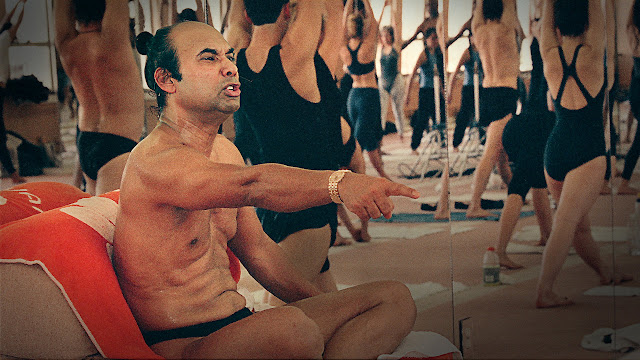Bikram Yoga
Founded by Bikram Choudhury, Bikram Yoga is hugely popular in both North America and other continents. Usually practiced as hot yoga, Bikram Yoga is composed of 26 poses. Classes usually last 90 minutes, and each yoga pose is executed twice.
Bikram Yoga
As mentioned above, Bikram Yoga is based on 26 yoga poses or positions, two of which are breathing positions (physical postures used with controlled breathing techniques), Bikram Yoga poses can be range from beginner yoga poses to ones which are quite difficult.
A key part of Bikram’s Yoga is to do it ‘hot’ – otherwise
called ‘hot yoga’. Essentially, hot yoga simply means to perform yoga in an
environment with high temperatures. In the case of Bikram’s Yoga, classes usually
start at around 95 degrees Fahrenheit and 50% humidity. Sessions include all 26
poses and exercises, and usually rotate through all of them twice in a single
session – which usually lasts about 90 minutes. As Bikram Yoga classes
progress, the heat is usually gradually increased until the final classes or
upper classes are performed in rooms preheated to about 130 degrees Fahrenheit.
All you need to perform Bikram Yoga is a yoga mat and a towel.
Bikram Postures and Poses
Bikram Yoga poses are of the more popular yoga poses in North America. Some common poses like the Khapalbhati or the Bhujangasana yoga poses can be seen on advertisements online, in newspapers and in subway stations. Some Bikram Yoga poses are relatively easy to perform, some much more difficult. Multiple classes are needed in order to perform each pose correctly. Because Bikram Yoga classes usually rotate through the entire 26 yoga poses twice in each class, your body gets a chance to stretch the appropriate muscles the first time around so that you can perform the yoga pose much more efficiently the next time around. For details on each Bikram Yoga pose, see our Yoga Positions article.
Bikram Choudhury – Living Yoga Champion
Bikram Choudhury was born in India, in the city of Kolkata (then Calcutta) in 1946. Bikram’s interest in Yoga started at an early age and he trained regularly. By the tender age of 4, Bikram was training under Bishnu Ghosh, not only a famous yogi at the time, but founder of the College of PhysicalEducation in India and brother to Paramahansa Yogananda, author of the famous ‘Autobiography of a Yogi’ and founder of the Self-Realization Fellowship in California, USA.
By the age of 13, Bikram already held the title of National India Yoga Champion, defending the title for 3 consecutive years, becoming the undisputed Champion of Yoga in India. Shortly after he was 17, Bikram injured his knee in a weightlifting accident, and was told he would never walk again. Undeterred, and using his mental and physical teachings to aid him, he went back to training with Bishnu Ghosh and fully recovered in 6 months.
Bikram and Bishnu started opening yoga schools in India which became extremely successful very quickly – partly due to his and Bishnu’s earlier successes, partly due to his full recovery using his own yoga techniques – and the idea to expand internationally came to fruition as the pair opened Yoga schools in Japan which were also very successful.
Bikram Choudhury’s success in India and East Asia as a Yoga master and Champion helped him bring his technique to the United States, where he opened another Yoga College of India (now worldwide). His contemporary yoga techniques, including ‘hot yoga’, have become a mainstay in North America. Recently Bikram and the name ‘Bikram’s Yoga’ has been the center of some controversy as Choudhury insists that only Yogi’s instructed in his College of Yoga are certified to call their yoga classes ‘Bikram Yoga’. The lawsuit has changed some public opinions about Bikram, but there is no denying that Bikram is perhaps the most talented Yogi alive today, and that Bikram Yoga is here to stay
Bikram’s Lawsuit
Bikram’s lawsuit was filed to keep so-called imitators to teach his techniques. He argues that only Yogi’s certified in his Yoga Colleges should be certified to use the name Bikram’s Yoga. The lawsuit has caused some controversy with other prominent yogi’s who believe the practice should be available to all who want to learn. On the other hand, Bikram argues that unless they learn the very intricate teaching techniques of his college, the student is not truly learning Bikram’s yoga to its fullest. Both are good points – certainly the lawsuit itself has helped the popularity or Bikram Yoga skyrocket in North America




.jpg)


